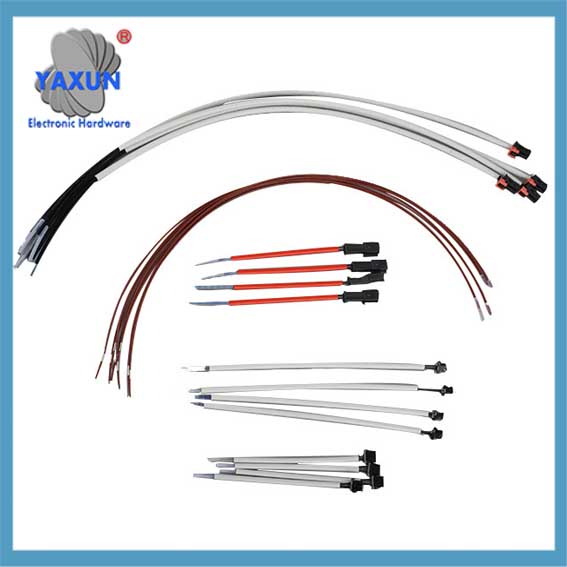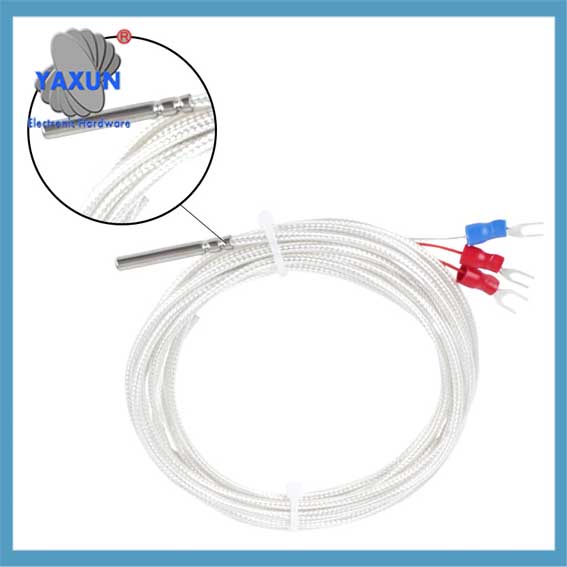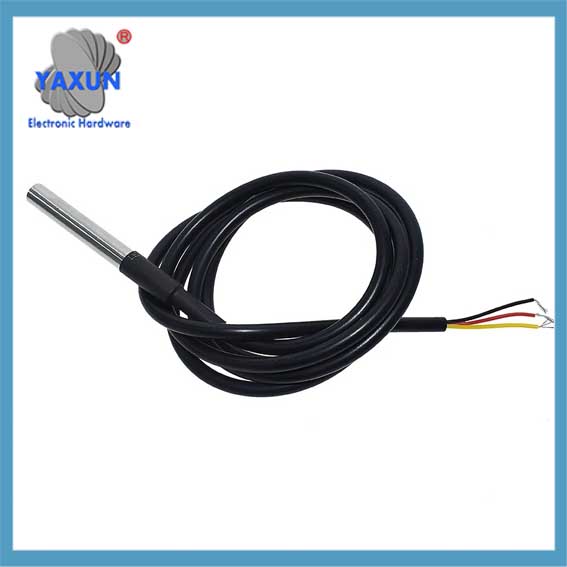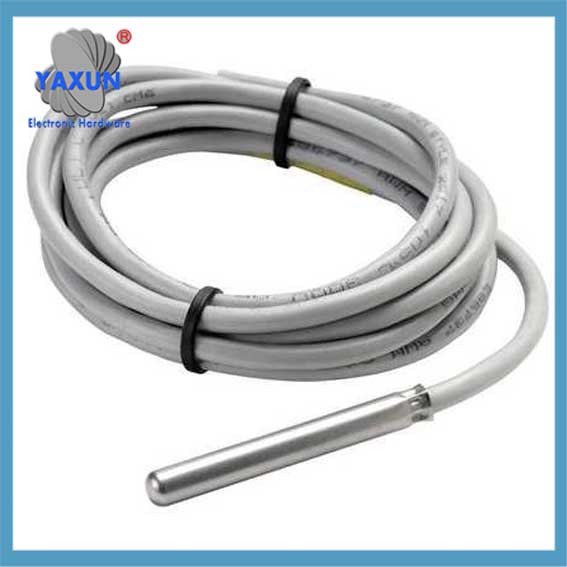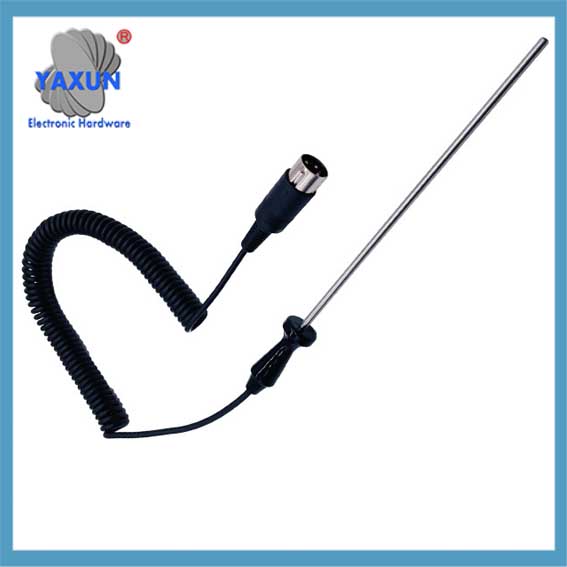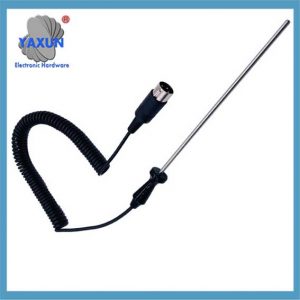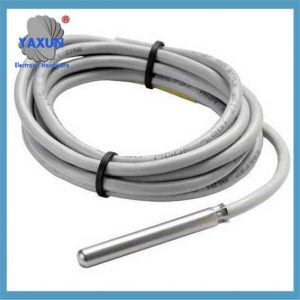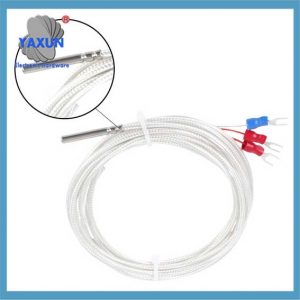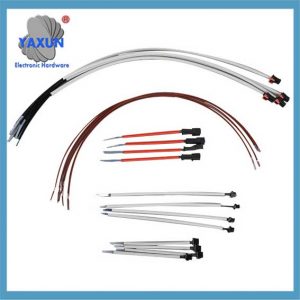Produktų kategorijos
- Šilumos saugiklis 32
- Paviršiaus laikikliai 12
- Termistorius 36
- PCB kalno saugiklių laikiklis 27
- Laidų diržai 6
- Ašmenų saugiklių laikikliai 17
- Termostatas 50
- Elektrinis saugiklis 24
- Automobilių temperatūros jutiklis 7
- Šilumos grandinės pertraukiklis 22
- „Fuse Box Holder“ 36
- Temperatūros jutiklis 75
- Šiluminis jungiklis 68
- Automobilių saugiklis 20
- Varžtas žemyn 8
Produktų žymos
NTC, PTC, PT100, DS18B20 temperatūros zondo jutikliams
Termoelemento zondas: Temperatūrai išmatuoti naudojamas termoelektrinis efektas, ir turi plataus matavimo diapazono ir greito atsako greičio charakteristikas.
Šiluminio pasipriešinimo zondas: Naudojama savybė, kurią metalo ar puslaidininkių medžiagų atsparumas keičiasi su temperatūra, kad išmatuotų temperatūrą, ir turi aukšto matavimo tikslumo ir gero stabilumo savybes.
Puslaidininkių zondas: Naudojama savybė, kad puslaidininkių medžiagų laidumas keičiasi su temperatūra temperatūrai, kad išmatuotų temperatūrą, ir turi mažo dydžio savybes, lengvas ir mažas energijos suvartojimas.
NTC, PTC, PT100, DS18B20 Temperature probes and temperature sensors play an important role in the field of temperature measurement. The following is a detailed introduction to temperature probe sensors:
There are many types of temperature sensors, įskaitant:
Thermocouples
These sensors are made of two dissimilar metals that connect at two points to form a junction. They are reliable, accurate, and can operate over a wide range of temperatures.
Atsparumo temperatūros detektoriai (RTS)
These sensors are based on the change in resistance of a metal as the temperature changes.
Termistoriai
These sensors use the temperature characteristics of semiconductor resistors, which change resistance as the temperature changes. Thermistors are sensitive and have high accuracy relative to their cost.
Neigiamas temperatūros koeficientas (NTC) Termistoriai
These sensors are sensitive and can respond to very small temperature changes. They have a temperature range of -50 ° C iki 250 ° C..
Resistive temperature detectors
These sensors have positive temperature coefficients (PTC) and offer precise temperature measurements. Tačiau, they have poor sensitivity.
1. Definition and working principle
Temperature probe:
Definition: A temperature probe is a device specifically used to measure temperature, and its core component is a temperature-sensitive element.
Darbo principas: A temperature probe uses sensitive elements (such as thermocouples, šiluminiai rezistoriai, puslaidininkiai, kt.) to convert temperature changes into electrical signals for subsequent circuit processing or display.
Temperature sensor:
Definition: A temperature sensor is a broader concept that includes a temperature probe and a signal processing circuit connected to it.
Darbo principas: A temperature sensor not only includes a sensitive element, but also has a signal processing circuit that can complete the acquisition, temperatūros signalų apdorojimas ir išvedimas, usually in the form of digital or analog signals.
2. Types and characteristics
Temperature probe type:
Termoelemento zondas: Temperatūrai išmatuoti naudojamas termoelektrinis efektas, ir turi plataus matavimo diapazono ir greito atsako greičio charakteristikas.
Šiluminio pasipriešinimo zondas: Naudojama savybė, kurią metalo ar puslaidininkių medžiagų atsparumas keičiasi su temperatūra, kad išmatuotų temperatūrą, ir turi aukšto matavimo tikslumo ir gero stabilumo savybes.
Puslaidininkių zondas: Naudojama savybė, kad puslaidininkių medžiagų laidumas keičiasi su temperatūra temperatūrai, kad išmatuotų temperatūrą, ir turi mažo dydžio savybes, lengvas ir mažas energijos suvartojimas.
Temperature sensor type:
Analog temperature sensor: outputs analog signals, which need to be converted into digital signals by analog-to-digital converters for subsequent processing.
Digital temperature sensor: directly outputs digital signals, has strong anti-interference ability, didelis tikslumas, and is easy to integrate into the control system.
Intelligent temperature sensor: has self-diagnosis, savaiminis kalibravimas, communication and other functions, ir gali realizuoti nuotolinį stebėjimą ir valdymą.
3. Selection and application
Selection factors:
Application environment: Apsvarstykite, ar išmatuotoje aplinkoje yra ypatingų sąlygų, tokių kaip korozija, aukšta temperatūra, aukšto slėgio, kt., kad būtų parinktos tinkamos medžiagos ir apsaugos lygiai.
Measurement range: Pasirinkite tinkamą jutiklį pagal išmatuotinos temperatūros diapazoną, kad užtikrintumėte, jog jutiklis gali tiksliai matuoti reikiamame diapazone.
Accuracy requirements: According to the accuracy requirements of the application for temperature measurement, select a sensor with corresponding accuracy.
Cost budget: Under the premise of ensuring performance, consider cost factors and choose cost-effective sensors.
Application areas:
Industrial automation: used to monitor temperature changes in industrial equipment, machines and production processes to ensure normal operation of equipment and product quality.
Medical industry: used in medical equipment, temperature monitoring instruments and drug storage equipment to monitor patient temperature, ambient temperature and drug storage conditions.
Automotive industry: used in electric vehicle motors, capacitors, DC converters, charging systems, as well as automobile engines, gearboxes, air conditioning systems and exhaust systems to monitor and control the temperature of various liquids and gases.
Agriculture and food processing industry: used in agricultural greenhouses, cold storage, food processing equipment and transport vehicles to monitor and control the temperature of agricultural products and food.
Other fields: such as air conditioning and refrigeration industry, military and aerospace industry, Internet of Things industry, ir tt. are also widely used.
IV. Use and maintenance
Įdiegimas: Install the sensor correctly according to the installation instructions to ensure good contact between the sensor and the object to be measured and avoid measurement errors caused by improper installation.
Laidai: Teisingai prijunkite jutiklio signalo liniją ir maitinimo liniją, kad užtikrintumėte signalo perdavimo stabilumą ir tikslumą.
Kalibravimas: Reguliariai kalibruokite jutiklį, kad įsitikintumėte, jog jo matavimo tikslumas atitinka taikymo reikalavimus. The calibration process usually involves placing the sensor in a known temperature environment, comparing the difference between its output value and the standard value, and making necessary adjustments.
Priežiūra: Reguliariai valykite ir prižiūrėkite jutiklį, kad išvengtumėte dulkių, purvas, ir tt. that affect the measurement performance of the sensor. Tuo pačiu metu, pay attention to check whether the cable connection is loose or damaged, and replace damaged parts in time.
In summary, temperature probe sensors have a wide range of applications and an important position in the field of temperature measurement. When selecting and using them, it is necessary to make comprehensive considerations based on the specific application scenarios and requirements to ensure the accuracy and reliability of the measurement results. If you have any other questions or need further help, please feel free to let me know.
Susisiekite su mumis
Laukiu jūsų el. Pašto, Mes jums atsakysime 12 Valandos su vertinga informacija, kurios jums reikėjo.
 English
English Afrikaans
Afrikaans العربية
العربية বাংলা
বাংলা bosanski jezik
bosanski jezik Български
Български Català
Català 粤语
粤语 中文(简体)
中文(简体) 中文(漢字)
中文(漢字) Hrvatski
Hrvatski Čeština
Čeština Nederlands
Nederlands Eesti keel
Eesti keel Suomi
Suomi Français
Français Deutsch
Deutsch Ελληνικά
Ελληνικά हिन्दी; हिंदी
हिन्दी; हिंदी Magyar
Magyar Bahasa Indonesia
Bahasa Indonesia Italiano
Italiano 日本語
日本語 한국어
한국어 Latviešu valoda
Latviešu valoda Lietuvių kalba
Lietuvių kalba македонски јазик
македонски јазик Bahasa Melayu
Bahasa Melayu Norsk
Norsk پارسی
پارسی Polski
Polski Português
Português Română
Română Русский
Русский Cрпски језик
Cрпски језик Slovenčina
Slovenčina Slovenščina
Slovenščina Español
Español Svenska
Svenska ภาษาไทย
ภาษาไทย Türkçe
Türkçe Українська
Українська اردو
اردو Tiếng Việt
Tiếng Việt

